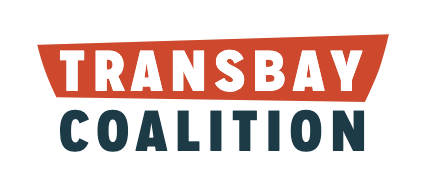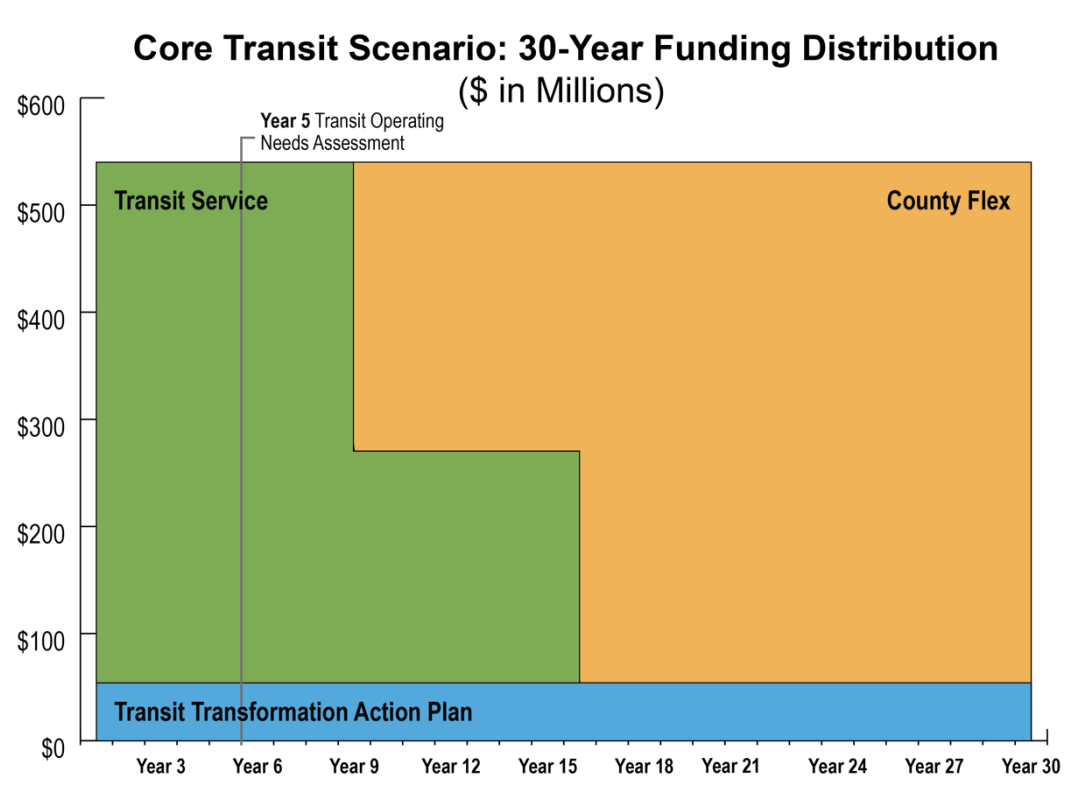On Monday, August 26, the Transportation Revenue Measure Select Committee will start to discuss options for legislation in 2025 to authorize regional transportation funding measure in 2026.
The options present stark contrasts – an option to set transit on a path toward thriving, a “less worse” option to slow the decline of public transportation in the Bay Area; and a “hunger games” scenario with different agencies and counties fielding many different ballot measures.
The option sustaining and improving service – Option 2 – would cover all 9 Bay Area Counties with $1.5 billion per year. It would maintain service, provide funding for Transformation Action Plan coordination and other improvements to make transit fast, frequent and convenient, plus funding for county priorities that can include transit or anything in PlanBayArea. This would deliver voter desires to improve transit, and would support the region’s climate and housing goals.
Option 1 would ask voters to pay a tax to reduce decline in Bay Area transit. It covers 4 of the 9 Bay Area counties, providing $540 million, less than needed to maintain transit service. This would lead to likely cuts for over 80% of Bay Area transit users. Jeff Tumlin, the head of the SFMTA, said that this option would lead to 35% cuts to Muni service at the Friday meeting of the Transportation Revenue Measure Executive Group.
It’s unclear how this option would support Caltrain without participation from Santa Clara County. Option 1 funds about half of BART’s shortfall, likely leading to cuts. Option 1 focuses on replacing lost fare revenue, so it does little to reduce decline at Muni and AC Transit whose revenue mix relies less on fares.This option assumes that needs to fund transit service are short term, and reduces funding for transit service over time.
Option 1 has some funding for coordination, but would attempt to coordinate declining service. Counties that don’t participate in the tax would take coordination funding from funds currently used to provide service. As Bill Churchill of County Connection said at the Transportation Revenue Measure Executive Group meeting, the core of customer experience is service. You’re not improving customer experience by cutting service.
Option 1 includes San Francisco, Alameda, Contra Costa, and San Mateo counties. Other counties can opt in, but they would need to make the decision during the 2025 legislative session.
Lastly, if the region cannot agree on a multi-county regional measure, the fallback would be a “hunger games” option with agencies and counties doing separate measures, resulting in multiple transit ballot measures in some counties. For example, San Francisco might need three separate measures for Muni, BART and Caltrain.
To speak up, you can:
- Send an email by 5pm on August 25, to info@bayareametro.gov
- Come to the meeting in person at 375 Beale Street, in San Francisco, starting at 9:30am
- Provide virtual public comment using this zoom link.

